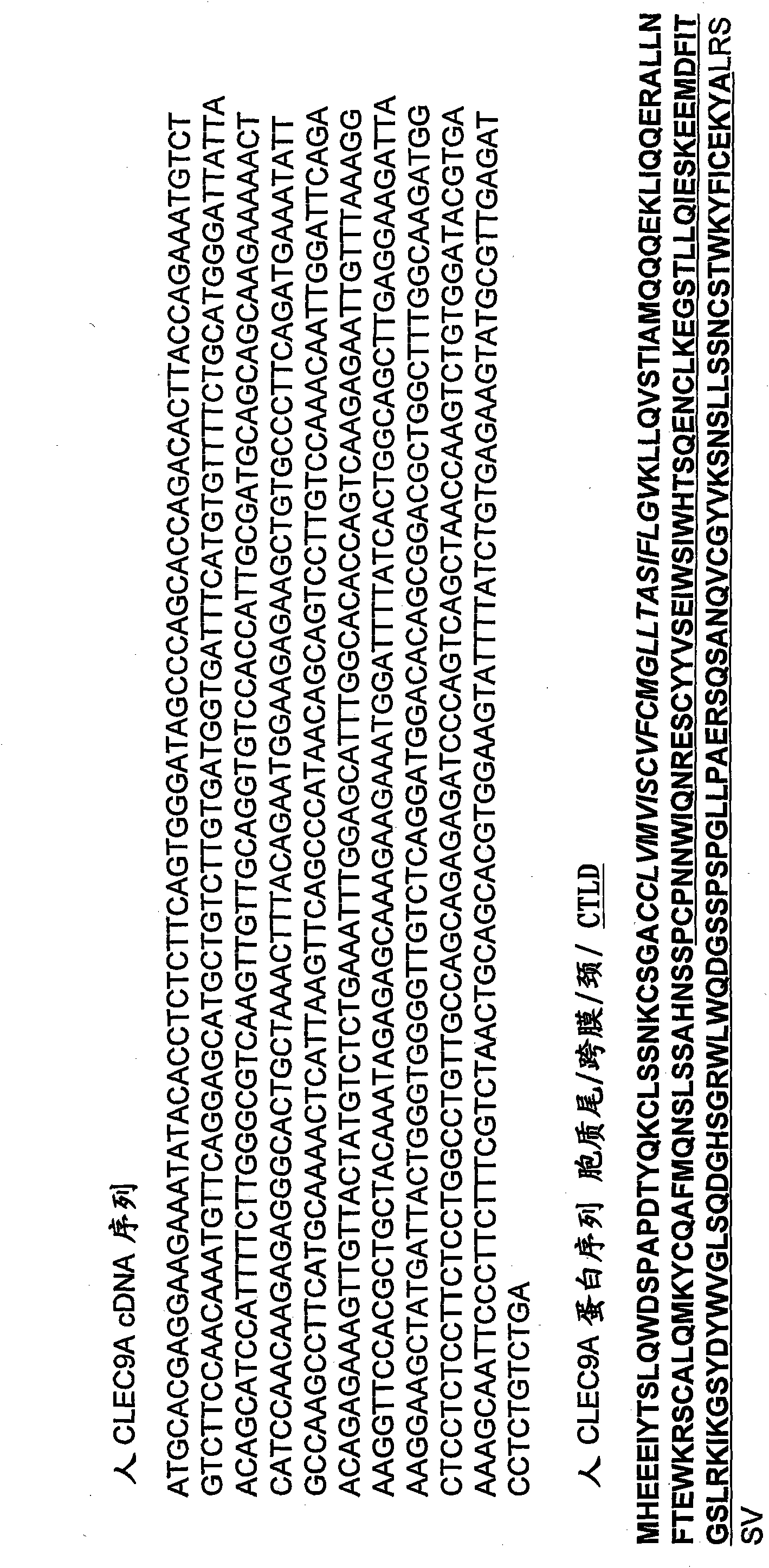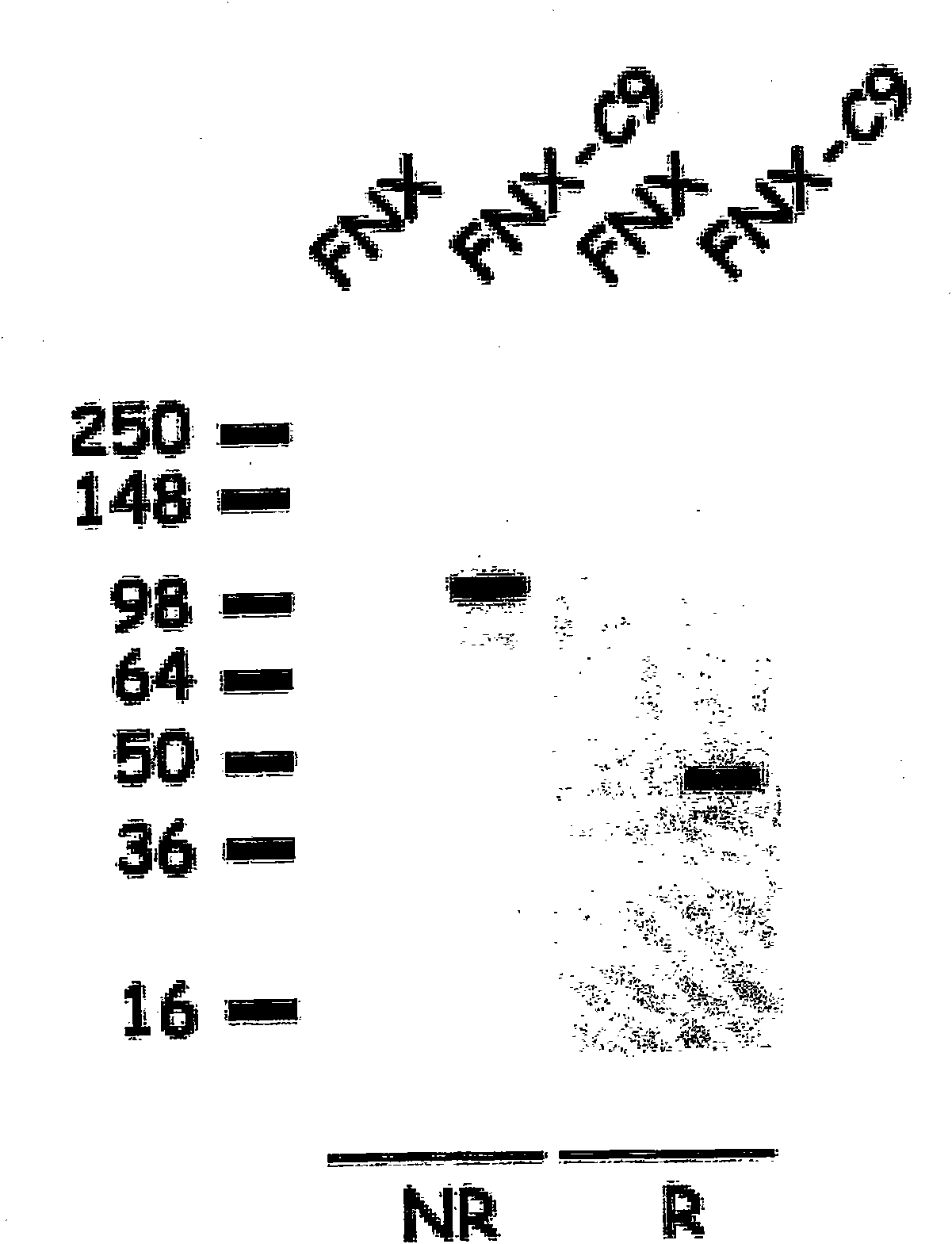Immune modulation via C-type lectin
An immune response and antigen technology, applied in immunoglobulin, anti-animal/human immunoglobulin, allergic diseases, etc., can solve problems such as unknown binding specificity correlation
- Summary
- Abstract
- Description
- Claims
- Application Information
AI Technical Summary
Problems solved by technology
Method used
Image
Examples
Embodiment
[0245] Sequence and structure of CLEC9a
[0246] A search of the NCBI gene database revealed that CLEC9a sequences have been identified in mice (Mus musculus), apes (Pan troglodytes), humans (Homo sapiens) and rhesus monkeys (Macaca mulatta). A blast search using the mouse CLEC9a protein sequence also revealed predicted CLEC9a proteins in rat (Rattus norvegicus), dog (Canis familiaris) and bovine (Bostaurus). The human cDNA sequence and its representative protein sequence with related domains are in figure 1 described in detail. The mouse cDNA sequence and its representative protein sequence that we cloned from mouse CD8α+DC are in figure 2 in detail. This sequence differs from the published cDNA sequence in that it contains an additional G residue, causing a frameshift to the end of the molecule, resulting in a relatively figure 2 Longer proteins shown in . Our sequence appears to be correct as it matches the published genome sequence (NC_000072.4GI:94471533); as seen ...
PUM
 Login to View More
Login to View More Abstract
Description
Claims
Application Information
 Login to View More
Login to View More - R&D
- Intellectual Property
- Life Sciences
- Materials
- Tech Scout
- Unparalleled Data Quality
- Higher Quality Content
- 60% Fewer Hallucinations
Browse by: Latest US Patents, China's latest patents, Technical Efficacy Thesaurus, Application Domain, Technology Topic, Popular Technical Reports.
© 2025 PatSnap. All rights reserved.Legal|Privacy policy|Modern Slavery Act Transparency Statement|Sitemap|About US| Contact US: help@patsnap.com



